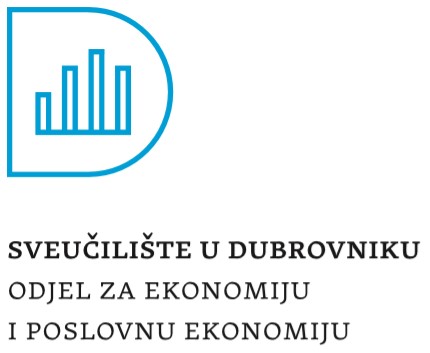|
Objectives and goals
IntroductionClick to read 
At the end of this module you will be able to:
1.Managing useful tools as SWOT analysis and GANTT CHART
2.Engaging customers and suppliers
3.Adopting the main digital leadership strategies
4.Forecasting and planning your entrepreneurial opportunities
Digital Business Planning and Management
SWOT Analysis Click to read 
The SWOT analysis (also known as the SWOT matrix) is a strategic planning tool used to evaluate:
•Strengths
•Weaknesses
•Opportunities
•Threats
of a project or in an enterprise or any other situation in which an organisation or an individual must make a decision to achieve a goal.
It combines the study of the strengths and weaknesses of an organisation, a geographical area, or a sector, with the analysis of opportunities and threats in their environment. As such, SWOT Analysis is instrumental in the development of a strategy formulation.
Digital Business Planning and ManagementClick to read 
|
SWOT Analysis
|
|
|
|
|
Positive Aspect
|
Negative aspect
|
|
Internal Factors
|
Strenghts
|
Weaknesses
|
|
|
|
|
|
External Factors
|
Opportunities
|
Threats
|
|
SWOT Analysis in DE
|
|
|
|
Strenghts
|
Brand identity, Cost advantage, Continous business improvement
|
|
|
Weaknesses
|
Low profit margins, Seasonality
|
|
|
Opportunities
|
Diversification, Expansion of local businesses, Strategic cooperation with affiliated industries
|
|
|
Threats
|
Loss of profits due to low profit margins, E-commerce industry barriers, Cyber-security issues
|
|
The four points of the SWOT analysis (strengths, weaknesses, opportunities and threats) come from a single chain of values intrinsic to society and can be grouped into two categories:
1.Internal factors: these are the organization's internal strengths and weaknesses.
2.External factors: these are the opportunities and threats present outside the organization.
Internal factors can be seen as strengths or weaknesses depending on their impact on the organization of its objectives. What can be a strength against one goal can be a weakness for another goal.
External factors may include macroeconomic issues, technological change, legislation, and socio-cultural changes, as well as changes in the market and competitive position.
SWOT analyses are used as input for the generation of possible creative strategies, using the following questions:
1.How can we use and exploit every force?
2.How can we improve any weakness?
3.How can you take advantage of every opportunity?
4.How can we reduce each of the threats?
The SWOT analysis utility is extensive: it can be used in any decision-making process in which a desired final state (goal) has been defined. It can also be used in pre-crisis and as preventive planning in crisis management.
A SWOT analysis is essential to define the next steps in the planning process for achieving the objectives.
SWOT analysis is often used in universities to identify strengths and weaknesses, opportunities, threats and areas of possible development.
Planning Tools: Gantt Chart Click to read 
The Gantt Chart is a support tool for project management. It is built starting from a horizontal axis - representing the total time frame of the project, divided into incremental phases (e.g. days, weeks, months) - and from a vertical axis - representing the tasks or activities that make up the project.
Gantt Chart Sample Click to read 

The horizontal bars of variable length represent the sequences, duration and time span of each individual project activity (the set of all project activities through the work breakdown structure). These bars can overlap during the same time span and indicate the possibility of carrying out some of the activities in parallel.
As the project progresses, secondary bars, arrows or colored bars can be added to the diagram, to indicate the underlying activities complete or an integrated portion of them. A vertical line is used to indicate the reference dates.
A Gantt diagram therefore allows the graphic representation of a calendar of activities, useful for planning, coordinating and tracing specific activities in a project, giving a clear illustration of the progress of the project represented.
Benefits of Business Planning Click to read 
Business plan is a written summary of an entrepreneur's business proposal, its operational and financial details, its opportunities and marketing strategy, as well as the skills and abilities of its managers. It indicates the way forward to lead a company to success.

Main benefits of the business planClick to read 
1. The need to draw up a plan puts the potential entrepreneur in a position to study well the meeting point between her/his long-term vision and reality, objectively evaluating the chances of success
2. A well-prepared business plan attracts lenders and investors and allows you to communicate the potential that the company offers
3. The added value that the business plan must make explicit, inside and outside the company, consists above all in the analysis of reality and in-depth analysis of the details, in order to reduce uncertainty and business risk
Establishing and Managing Customers and Suppliers �
Online customer engagementClick to read 
Identifying and engaging customers is one of the key steps for a successful business. In particular, the digital transformation has exponentially multiplied business opportunities with the possibility of reaching customers and markets otherwise difficult to reach.
Profiling your customer profile will allow to better understand the market as well as determine a qualitative improvement of the product to sell. Analysing the customer profile will help you to understand the strengths and weaknesses of your offer in order to correct any possible dysfunctions.
Furthermore, the identification process will be focused on which suppliers you need so that you can define an adequate sales planning optimising sales and reducing waste.
Who they are?
Being aware of the age and gender of individual consumers, or the size of the industry and the company for corporate clients will help you to define an initial screening of your online customers.
What are they interested in?
The online environment allows you to efficiently take into account specific customer preferences, giving you the opportunity to create products that are increasingly personalized and tailored to the specifics of your target group.
What do they buy online?
Undertake a detailed market analysis: study the main market trends for the product you intend to offer. This preliminary activity will allow you to better understand how to make your product attractive, based on the purchase preferences of your potential customers.
There are three methods to understand consumer preferences:
1.Imagine what you'd be looking for if you were in their shoes and look at your entrepreneurial activity from their point of view
2.Search and evaluate data about your target consumers trying to extract as much information as possible that will help you understand how to present your product in an attractive way
3.Ask your customers directly for feedback focusing in particular on what needs to be improved/further developed
Relationships in a digital environment: Online VS Offline engagementClick to read 
Digital Leadership
Leadership Paradigms in the Digital EraClick to read 
While traditional leadership leads the organisation towards sustainable paths of competitiveness and profitability, digital leaders are also in charge of the digitalisation priorities. They represent the agent that sustains and exploits a culture of innovations and digital empowerment.
Digital leaders drives and disseminate new management frameworks that disrupt old fashioned schemes to embrace forward-thinking solutions consistent with the digital ecosystems.
According to a very extensive study, effective digital leaders are distinguishable by four traits:
1.They understand that digital transformation is not a mere innovation project but a new restructure of the business on its own
2.They value digital talents and they invest on the empowerment of their team
3.They are not afraid to commit financial resources to next-gen technologies
4.Digitalisation is strongly perceived as a unique opportunity – rather than a plausible option
Most importantly, digital leaders are well aware that digital innovation is first of all a matter of people and how ICT culture is widespread across all functions. Digital awareness is the fundamental assumption through which competitive organisations are forged.
Critical Thinking in ICT ecosystemsClick to read 
The enormous amount of data freely available on the World Wide Web make it much more difficult for digital leaders to draw reliable, consistent and realistic conclusions.
In order to make the best but of the opportunities coming from the digital environment, digital leaders are highly recommended to train their critical sense.
Evidence-based decision making is the strongest antidote against the anxiousness defined by uncertainty scenarios.
Being “critical” implies the development of creative solutions built from unbiased reasoning. The risk component can never be completely eliminated, however it is possible to drastically reduce it through continuous and analytical filtering.
Digital Business Analysis
Forecasting and Scenario Planning Click to read 
Two important means for every (digital) entrepreneur are:
1.Creativity
2.Ability to predict market trends
In order to develop this two important skills, the behavioural analysis can represent a very important starting point. This will help your business in reaching a decisive competitive advantage in the (online) market positioning.
The ability to imagine and planning potential scenarios brings you to connect your problems and questions with specific ideas that give you tailored made solutions for your business.
Moreover, creativity is not only important since the very beginning of your business, but should be the main and on-going key for good decision making processes. Being creative allows you to imagine novel solutions to better face the everyday life challenges in the business environment.
The innovative behaviour can be described into two specific phases:
1.Ideation: a process of new idea creation or adoption that will be developed into a new product, service, process or business model that brings a specific added value for customers/users
2.Realisation: the creation of something completely new and added value that represents a novelty for the future potential consumer Creating something that doesn’t exist or is not used the way you intend in order to create value for your customers.
From idea to opportunityClick to read 
What is an entrepreneurial opportunityClick to read 
A business opportunity occurs when the product/good/service produced meets market needs not yet satisfied and/or define an innovative way to efficiently use the same resources. Indeed, the combination of the value sought and value creation capability determines an entrepreneurial opportunity.
Investing in the shared electric mobility market, in a city equipped with the necessary infrastructures, i.e. bike lanes, charging points, etc., and developing an integrated app booking system, is an excellent example of a business opportunity.
What is not an entrepreneurial opportunityClick to read 
A business opportunity is also measured in terms of timing. If the market is saturated, it may be too late to introduce a good that everyone already has. On the other hand, sometimes people are not ready, both culturally and technologically, to understand what is on offer, perhaps in this case it is too early.
For instance, investing in the electric mobility in a rural area where there is not demand nor infrastructure, could represent a wrong choice.
Business Model Canvas for Digital EntrepreneurshipClick to read 
The Business model Canvas is a graphic diagram useful for developing new business models or perfecting existing ones. With “Business model”, we indicate the set of organisational and strategic solutions that allow the company to create, distribute and acquire value.
According to the logic of "visual thinking", the business canvas model allows to elaborate and classify complex concepts related to the functioning of your business so that they are understandable to all.
The business model canvas represents an ideal tool to have a clear and schematic vision of any business project (not only at very high levels). This tool will be very useful to organise basic activities from the opening of a small restaurant to the management of complex business systems.
Digital Business Analysis Click to read 
|

 Play Audio
Play Audio 















